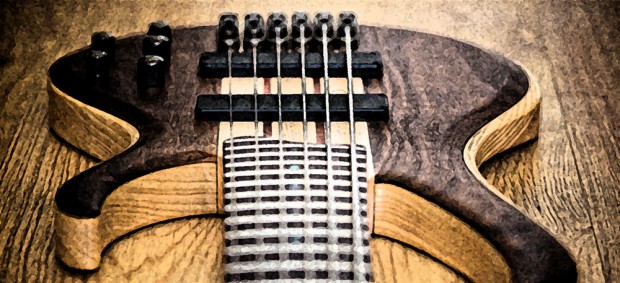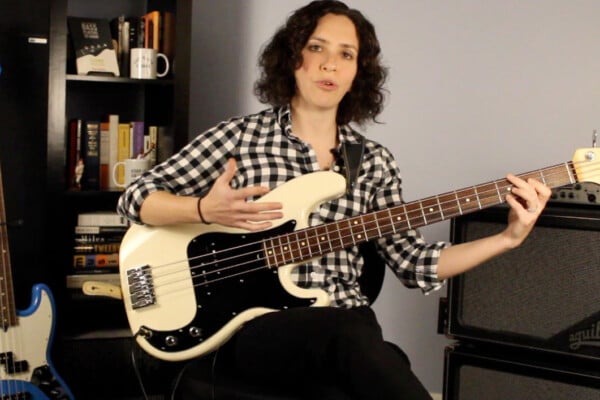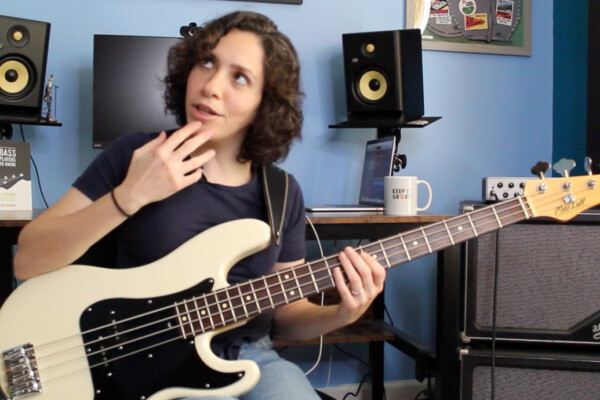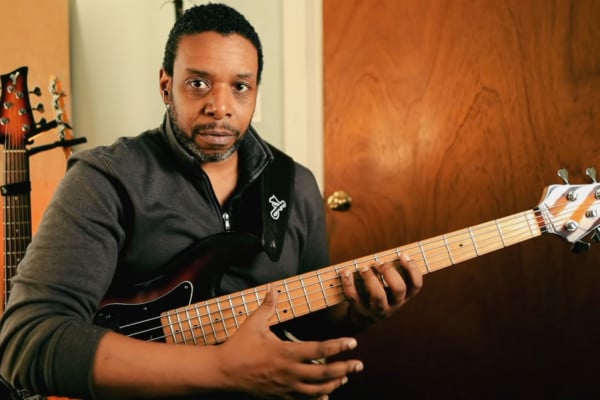Adjusting to the Upper Register on a 6-String Bass

Q: I have an issue with playing my 6-string bass so I searched the No Treble archives and found that you once wrote tips for making the shift from 4- to 6-string bass. I followed your advice there, but when playing a two octave scale past 12th fret (lets say F-Ionian), beginning on the B string, its hard (for me at the moment at least) not to have a crooked wrist/hand position. If I straighten out my wrist, I cant keep a “correct” hand position. How can I access the upper register on my 6-string on the lowest strings? In terms of healthy “correct” hand-position, fingerings and such?
A: You’re right. Playing on the lower register strings (B and E), above the 12th fret makes for an awkward position. I’ve found the same thing, and my tendency is simply not to hang out up there for very long if I can help it (and you almost always can help it).
I would stick to running your two octave scales and arpeggios:
- Lower on the fretboard
- Run them (even 3 octaves) more horizontally on the fretboard. It is always helpful to have vertical positions down just like it is helpful to have command over horizontal movement.
Seeing as that area of the fretboard is simply a carbon copy of your lower register, there nothing wrong with keeping it low when running extended patterns like that, especially if it is actually causing you discomfort to play there.
There is no way to play with a great hand position that far up the fretboard. Also, in my opinion, the B string doesn’t usually sound all that great up there anyway. So when on a gig, I would tend to play that range on the E string in the middle of the fretboard.
Actually, now that I think of it, I tend to play most things in the middle of the fretboard. I just think that most things sound better there. I ask my students to run a lot of material there as it also has the added benefit of reinforcing your knowledge of that place on the fretboard that is pretty nebulous for most bassists. I find most don’t know that area all that well. They think they do until they try to read a complicated line or play any complicated harmonic exercises.
So, side note…. make sure to work that area.
In a nutshell, I would simply keep it for the most part between the 1st and 12th frets when operating the full 6-string range of the instrument in the shed. Feel free to spend a little time working up higher on the fretboard, because we should neglect exactly nothing when it comes to proper development. But don’t strain your hands for it. In real life playing situations, there is little need to rock the B-string above the 12th fret for more than a note or two at a time.
Have a question for Damian Erskine? Send it to [email protected]. Check out Damian’s instructional books, Right Hand Drive and The Improviser’s Path.




I play a 6-string most of the time and tend not to force my hand into awkward positions on the fretboard (such as B & E string above the 12th fret). Damian explains this pretty well and his tips are great :)
Also, there’s a lesson on crossing the fretboard by John Myung of Dream Theater, playing a 4 octave C major scale by dividing it into groups of 6 notes and playing them in reverse modal order. A bit hard to explain, but take a look a this video. It’s an eye opener… http://youtu.be/ONsPAs5_ru8?t=33m23s